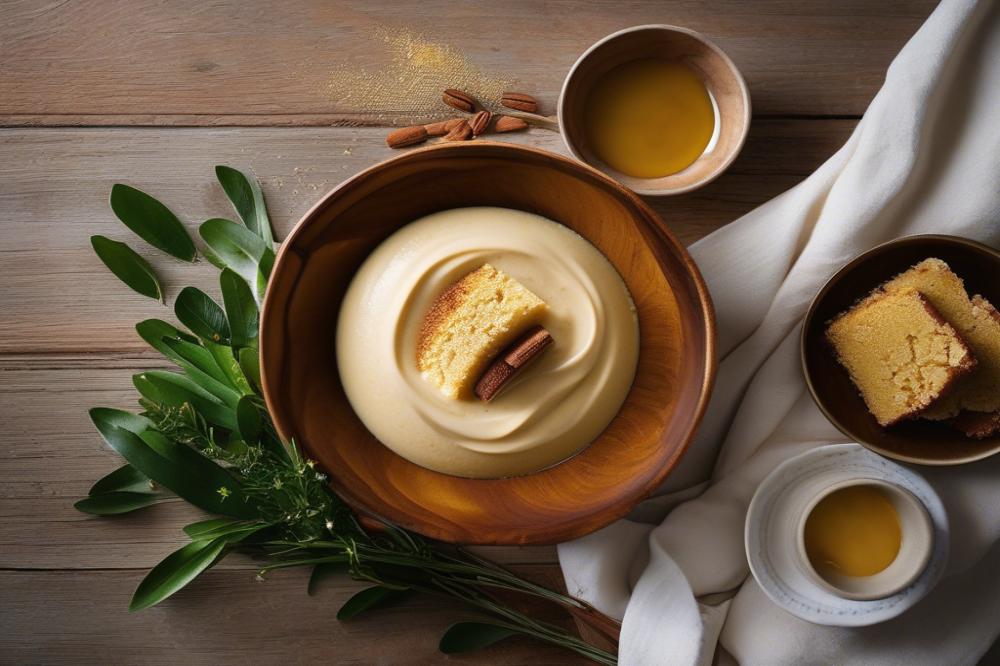Discovering Halva semolina Pudding
Halva semolina Pudding represents a delightful part of Greek desserts. This traditional sweet dish has been cherished for generations, often evoking memories of family gatherings and festive occasions. Created primarily from semolina, it embodies the rich and diverse flavors of Greek cuisine. The pudding’s texture is creamy and smooth, making it a favorite among those who appreciate sweet treats.
Semolina plays a crucial role in Greek recipes. It is made from durum wheat, granting dishes a unique consistency. Many households incorporate this ingredient into various meals, not just desserts. It lends a distinct flavor and helps enhance the overall cooking experience. This versatility allows semolina to shine in many traditional dishes, from savory to sweet.
People often crave sweet creamy desserts after meals. The comforting tastes and textures provide pleasure, creating a satisfying end to any dining experience. Halva, enriched with nuts and sometimes flavored with cinnamon or vanilla, sings with flavor. This sweet joy brings everyone together, creating moments of happiness at the table. In Greek Style Halva, the simplicity and richness come through, inviting anyone who tries it to indulge in a little piece of tradition.
What is Halva Semolina Pudding?
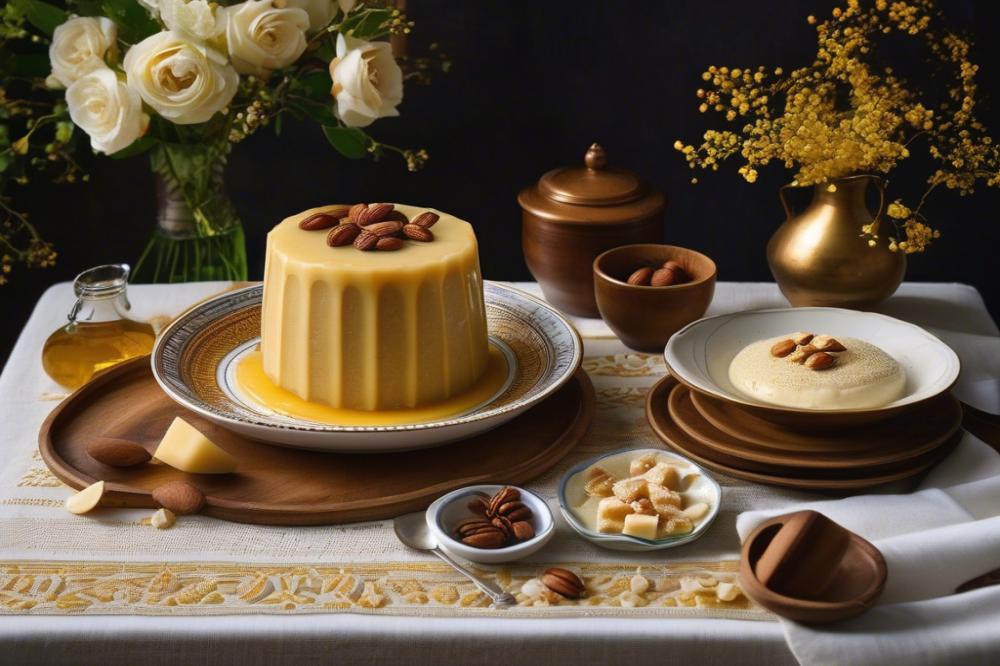
Halva Semolina Pudding is a delicious dessert found in many Greek households. Made primarily from semolina, it features a creamy texture that melts in your mouth. This pudding is typically sweetened with sugar and flavored with vanilla or lemon. Sometimes, nuts are added for an extra crunch, bringing a delightful contrast to the dish. Served warm or chilled, it is a comforting treat for all ages.
The origins of this tasty pudding can be traced back to ancient Greece. Halva has deep roots in Mediterranean cuisine, often made with various ingredients depending on the region. Greek recipes traditionally use semolina as the main ingredient, giving it a distinct character compared to other versions of halva found in places like the Middle East and India. In each culture, halva comes with different ingredients and methods of preparation, showcasing the diversity of this beloved dish.
When comparing Halva Semolina Pudding to other types of halva, intriguing differences emerge. For example, flour-based halvas are more common in the Middle East, while Greek versions emphasize semolina. Additionally, puddings from other cultures may include things like rice or cornmeal. Each type has its own unique texture and sweetness level, making it special in its own right. However, all share the common goal of satisfying a sweet tooth.
In Greek cuisine, halva is not just a dessert; it also represents tradition and cultural pride. Many families pass down recipes through generations, making the act of cooking and sharing this pudding a cherished ritual. The combination of semolina, nuts, and creamy sweetness creates not only flavor but also memories that last a lifetime.
Ingredients and Nutritional Information
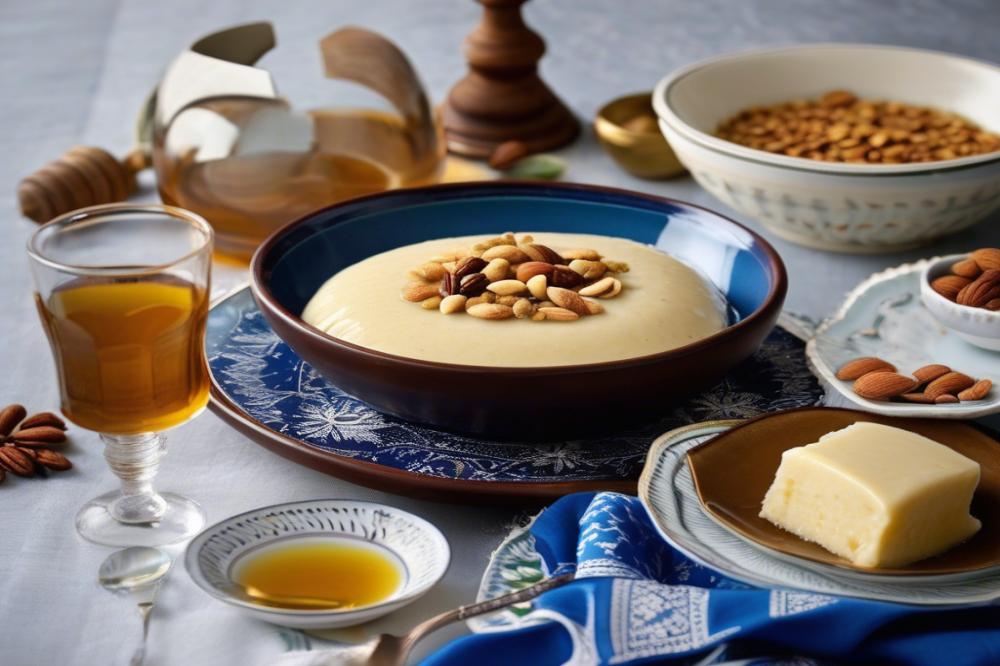
If you’re excited to create a delightful Halva Semolina Pudding in a traditional Greek style, this list of ingredients will guide your cooking. Each item plays a vital role in delivering that sweet, creamy texture and flavor that makes this dessert so beloved. Gather the following:
- 1 cup semolina
- 3 cups milk
- 1 cup sugar
- 1 teaspoon vanilla extract
- 1/4 cup unsalted butter
- Nuts for topping (e.g., almonds or walnuts)
Now, let’s break down the nutritional information for each ingredient. Understanding these values can help you appreciate this unique dessert better.
Semolina
This key ingredient has approximately 600 calories per cup. Semolina is mainly composed of carbohydrates, offering around 120 grams. It also contains about 20 grams of protein, making it a solid base for the pudding.
Milk
Using whole milk, you would expect roughly 150 calories for each cup. This rich liquid is not just about calories; it has around 8 grams of fat. Milk is also a great source of calcium, providing about 30% of the daily value needed for healthy bones.
Sugar
As the primary sweetener, sugar adds around 770 calories for one cup. This ingredient delivers instant sweetness, making the pudding truly delightful. However, it’s essential to use it sparingly if you are watching your sugar intake.
Butter
This creamy addition contributes about 400 calories from 1/4 cup. With around 45 grams of fat, butter helps create that characteristic richness in the dessert. It adds flavor that enhances the overall experience of halva.
Nuts
Topping your pudding with nuts gives it a nice crunch and extra nutrition. Depending on the type, a small handful of almonds or walnuts can provide healthy fats, additional proteins, and some fiber. This adds complexity to the texture and makes your Greek recipes even more exciting.
Cooking Instructions
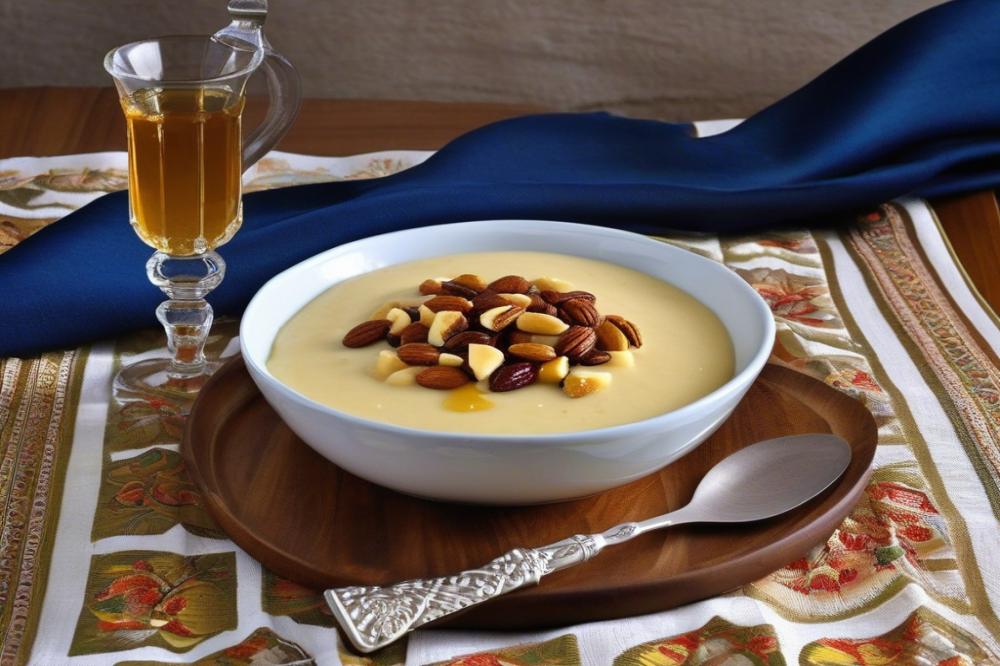
Step-by-step guide to preparing Halva Semolina Pudding
Begin by toasting the semolina. Use a non-stick pan over medium heat, stirring frequently. This step brings out the nutty flavor and adds depth to the pudding. Watch closely as it begins to turn golden brown. The aroma will fill your kitchen, signaling it’s almost time to move to the next step.
Next, heat the milk in a saucepan. Add in sugar while stirring until it dissolves completely. This mixture should be warm but not boiling. The warm milk will help the semolina absorb moisture more effectively. It’s crucial to combine these ingredients well to create a smooth mix.
Combine the toasted semolina with the warm milk mixture. Pour the milk slowly, stirring constantly. This technique prevents lumps from forming. Cooking requires patience, and this patience will pay off in texture. The semolina will start to thicken as it cooks.
Continue cooking and stirring the mixture until it thickens to your desired consistency. This usually takes around 10 to 15 minutes. The pudding should be smooth and creamy, clinging to the spoon. Adjust the cooking time for a thicker or thinner result based on your preference.
When the pudding is ready, remove it from the heat. Add vanilla extract and a generous pat of butter. These ingredients enhance the flavor. Stir well until the butter melts and everything is blended. The sweet aroma should now be tempting you.
Allow the pudding to cool for a bit. Pour it into serving dishes or a larger bowl. Let it rest at room temperature. Afterward, it can be placed in the refrigerator. Cooling helps the flavors meld and creates a delightful texture.
Tips for optimal texture and flavor
To achieve the best flavor, consider adding a sprinkle of cinnamon or nutmeg. These spices are common in many Greek recipes and complement the sweetness. Crushed nuts can be a delightful topping as well. They add crunch and contrast to the smoothness of the dessert.
Stir consistently throughout the cooking process to avoid sticking. Patience is key; rushing might cause the pudding to clump. Always use fresh ingredients for the best taste. Quality milk can significantly enhance the creaminess of the dish.
Finally, serve the halva with a drizzle of honey or a dollop of yogurt. These additions can make it even more enticing. Enjoy this traditional dessert as part of a special meal or simply as a sweet treat any time. Remember, this pudding is meant to be savored.
Serving Suggestions
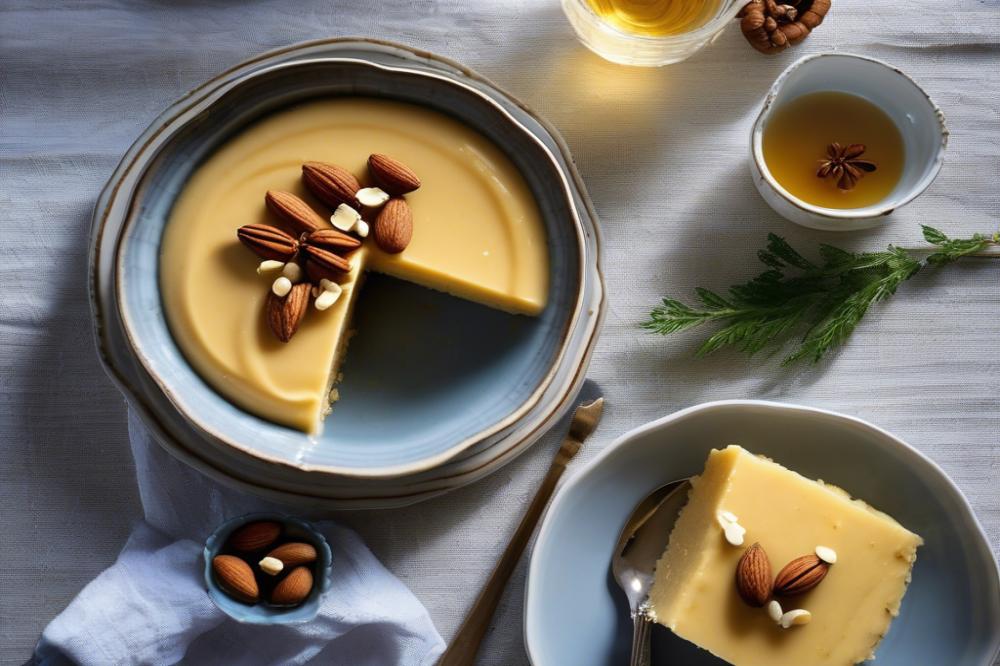
Garnishing your dessert is an easy way to elevate the flavors of halva semolina pudding. Consider topping it with a mix of chopped nuts like walnuts, pistachios, or almonds. These can add a delightful crunch and bring out the sweetness of the pudding. A light drizzle of honey or maple syrup can add an extra layer of sweetness. Infusing flavors with a sprinkle of cinnamon can also enhance the overall experience.
Enjoying this sweet treat alongside traditional Greek recipes creates a wonderful dessert table. Pairing halva with baklava, for instance, creates a blend of textures and flavors. You could also serve it with loukoum, a soft Turkish delight that complements the semolina pudding beautifully. These combinations can highlight the richness of Greek cuisine and provide guests with a gastronomic journey.
When it comes to presentation, aim for a festive look that makes the dish stand out. Serving the pudding in small bowls can create individual servings that look inviting. A dollop of cream on top offers a creamy contrast that looks pleasing. By placing fresh fruits, like berries or slices of citrus, around the pudding, you can add vibrant colors. Adding colorful plates or decorative napkins helps create an inviting atmosphere for your gathering.
Variations of Halva Semolina Pudding
Modifications for Dietary Preferences
Halva is often made with semolina, sugar, and oil. For those with gluten sensitivities, a simple switch to gluten-free flour can work wonders. Many enjoy vegan versions as well. Using vegetable oils and plant-based milk makes this dessert accessible. Substitute regular butter with non-dairy options. This allows everyone to enjoy the sweet delight without worry.
Flavor Variations
Adding different flavors can transform traditional recipes into something fresh. Chocolate lovers might experiment by mixing cocoa powder into the pudding mix. The rich taste harmonizes beautifully with the sweetness. For a citrus twist, consider adding lemon or orange zest. A touch of vanilla extract can also enhance sweetness, creating a fragrant experience.
Incorporating Seasonal Fruits or Spices
Incorporating fruits can elevate this dessert beyond the ordinary. Fresh berries in the summer, or sliced oranges in the winter, add color and taste. Chopped nuts can also give a delightful crunch. Walnuts or almonds complement the softness of the pudding. Adding warm spices like cinnamon or nutmeg provides a comforting variation. Many enjoy drizzling honey or maple syrup on top as a finishing touch. This creates a sweet contrast that is very appealing.
Bringing Tradition to Your Kitchen
Halva Semolina Pudding holds a special place in Greek culture. This dessert is more than just a delicious treat; it represents the warmth and hospitality of Greek family gatherings. Celebrations often feature this pudding, symbolizing joy and togetherness. Its unique flavor and texture make it a favorite among many.
Consider trying your hand at making this delightful dish at home. With simple ingredients and a few steps, preparing it can be a rewarding experience. Homemade halva allows for personal touches, such as adding nuts or experimenting with flavors. Don’t worry if it doesn’t turn out perfectly the first time; each attempt brings you closer to mastering this cherished recipe.
Sharing traditional recipes like this one creates lasting memories. Bonding over cooking not only teaches skills but also fosters connections with loved ones. You might discover stories or family traditions tied to the dish as you cook. In the end, it’s about more than just the dessert; it’s about the joy of togetherness and the love shared over each meal.

